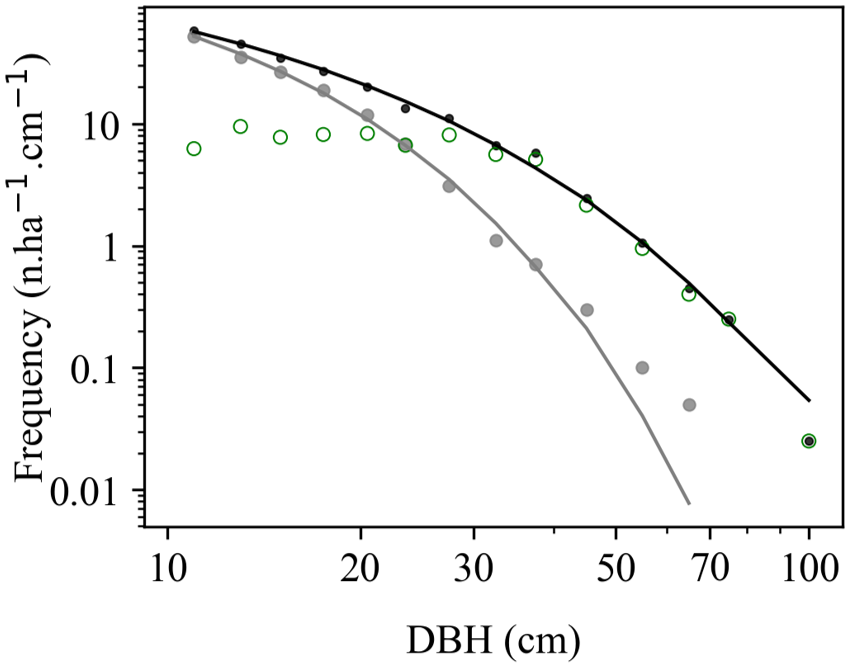The Science
Whether trees are in the canopy or not has long been recognized as a critical determinant of tree performance. However, the structural complexity of many tropical forests makes it difficult to determine canopy positions. The integration of remote sensing and ground-based data enabled this determination and measurements of how canopy and understory trees differ in structure and dynamics in the Central Amazon. Researchers found that canopy trees constituted 40% of the inventoried trees with diameter at breast height > 10 cm, and accounted for ~70% of aboveground carbon stocks. Diameter growth was on average twice as large in canopy trees as in understory trees and the size distribution also differed.
The Impact
The combination of high-resolution drone imagery and ground-based field work has great potential to improve the understanding of the structure and dynamics of old-growth tropical forests having dense understories. These results help scientists understand the proportion of trees in canopy and understory in relation to tree size, the contributions of canopy and understory trees to carbon stocks and wood productivity, and differences in stem growth and size distributions between canopy and understory trees.
Summary
Canopy trees constituted 40% of the inventoried trees with diameter at breast height (DBH) > 10 cm, and accounted for ~70% of aboveground carbon stocks and wood productivity. The probability of being in the canopy increased logistically with tree diameter, passing through 50% at 23.5 cm DBH. Diameter growth was on average twice as large in canopy trees as in understory trees. Growth rates were unrelated to diameter in canopy trees and positively related to diameter in understory trees, consistent with the idea that light availability increases with diameter in the understory but not the canopy. The whole stand size distribution was best fit by a Weibull distribution, whereas the separate size distributions of understory trees or canopy trees > 25 cm DBH were equally well fit by exponential and Weibull distributions, consistent with mechanistic forest models.


Contacts (BER PM): Daniel Stover, SC-23.1, Daniel.Stover@science.doe.gov (301-903-0289)
PI Contact: Jeffrey Chambers, Lawrence Berkeley National Laboratory, jchambers@lbl.gov
Funding
The study was financed by the INCT – Amazonian Woods (FAPEAM/CNPq) and by the Next Generation Ecosystem Experiments-Tropics, funded by the U.S. Department of Energy, Office of Science, Office of Biological and Environmental Research under Contract DE-AC02-05CH11231. Fellowship support for the first author was provided from Coordination for the Improvement of Higher Education Personnel (CAPES).
Publications
Araujo, R.F., J.Q. Chambers, C.H.S. Celes, H.C. Muller-Landau, A.P.F. dos Santos, F. Emmert, G.H.P.M. Ribeiro, B.O. Gimenez, A.J.N. Lima, M.A.A. Campos, N. Higuchi (2020), Integrating high resolution drone imagery and forest inventory to distinguish canopy and understory trees and quantify their contributions to forest structure and dynamics. PLoS ONE 15(12): e0243079. [DOI:10.1371/journal.pone.0243079]